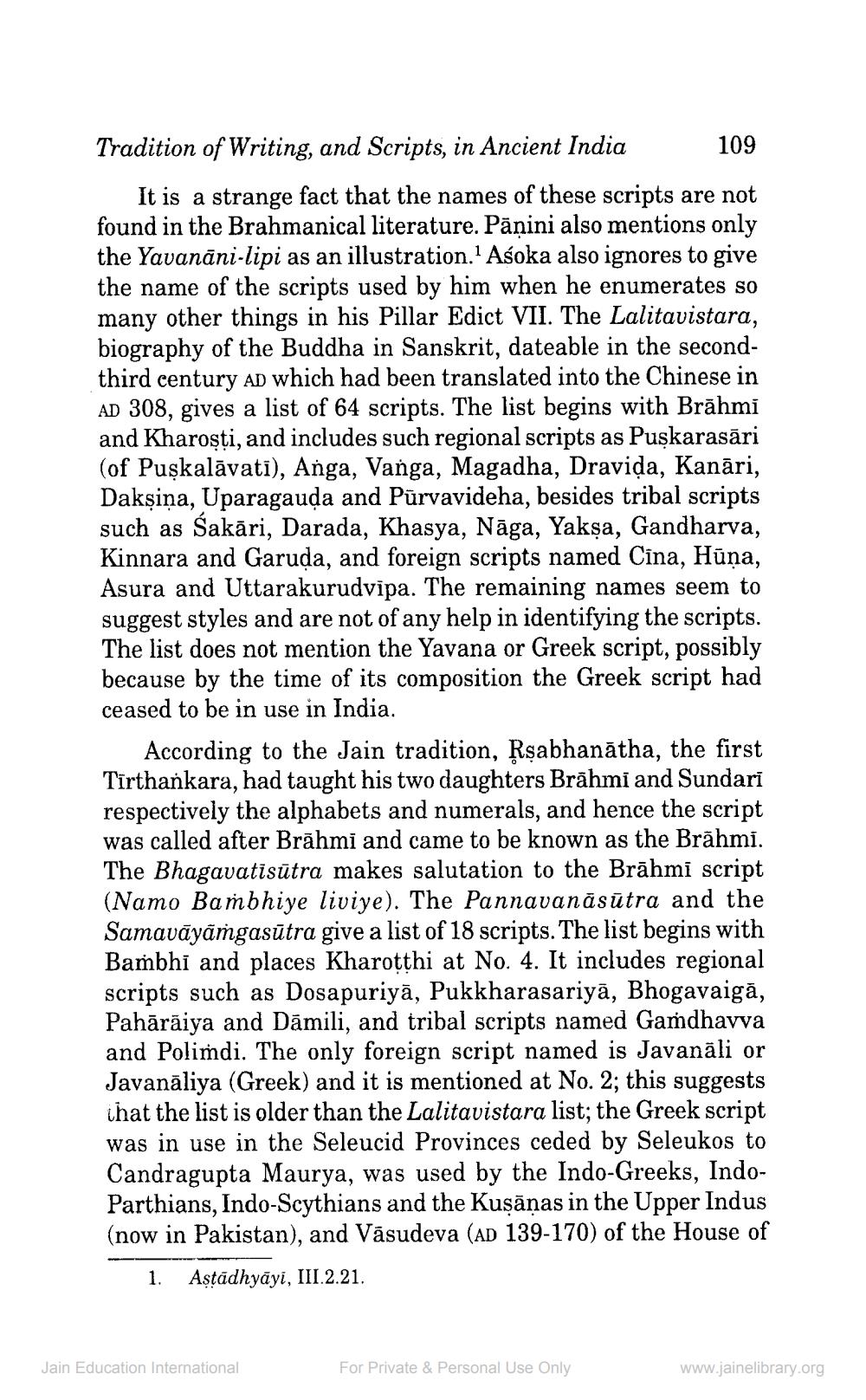________________
Tradition of Writing, and Scripts, in Ancient India
109
It is a strange fact that the names of these scripts are not found in the Brahmanical literature. Panini also mentions only the Yavanani-lipi as an illustration.1 Aśoka also ignores to give the name of the scripts used by him when he enumerates so many other things in his Pillar Edict VII. The Lalitavistara, biography of the Buddha in Sanskrit, dateable in the secondthird century AD which had been translated into the Chinese in AD 308, gives a list of 64 scripts. The list begins with Brahmi and Kharoşti, and includes such regional scripts as Puskarasāri (of Puşkalāvati), Anga, Vanga, Magadha, Dravida, Kanāri, Dakṣina, Uparagauḍa and Purvavideha, besides tribal scripts such as Śakāri, Darada, Khasya, Nāga, Yakṣa, Gandharva, Kinnara and Garuda, and foreign scripts named Cina, Hūņa, Asura and Uttarakurudvipa. The remaining names seem to suggest styles and are not of any help in identifying the scripts. The list does not mention the Yavana or Greek script, possibly because by the time of its composition the Greek script had ceased to be in use in India.
According to the Jain tradition, Rṣabhanatha, the first Tirthankara, had taught his two daughters Brahmi and Sundari respectively the alphabets and numerals, and hence the script was called after Brahmi and came to be known as the Brahmi. The Bhagavatisūtra makes salutation to the Brahmi script (Namo Bambhiye liviye). The Pannavanasūtra and the Samavāyāṁgasūtra give a list of 18 scripts. The list begins with Bambhi and places Kharoṭṭhi at No. 4. It includes regional scripts such as Dosapuriya, Pukkharasariya, Bhogavaigā, Paharaiya and Damili, and tribal scripts named Gamdhavva and Polimdi. The only foreign script named is Javanāli or Javanāliya (Greek) and it is mentioned at No. 2; this suggests that the list is older than the Lalitavistara list; the Greek script was in use in the Seleucid Provinces ceded by Seleukos to Candragupta Maurya, was used by the Indo-Greeks, IndoParthians, Indo-Scythians and the Kuṣaṇas in the Upper Indus (now in Pakistan), and Vasudeva (AD 139-170) of the House of
1. Aṣṭādhyayi, III.2.21.
Jain Education International
For Private & Personal Use Only
www.jainelibrary.org




